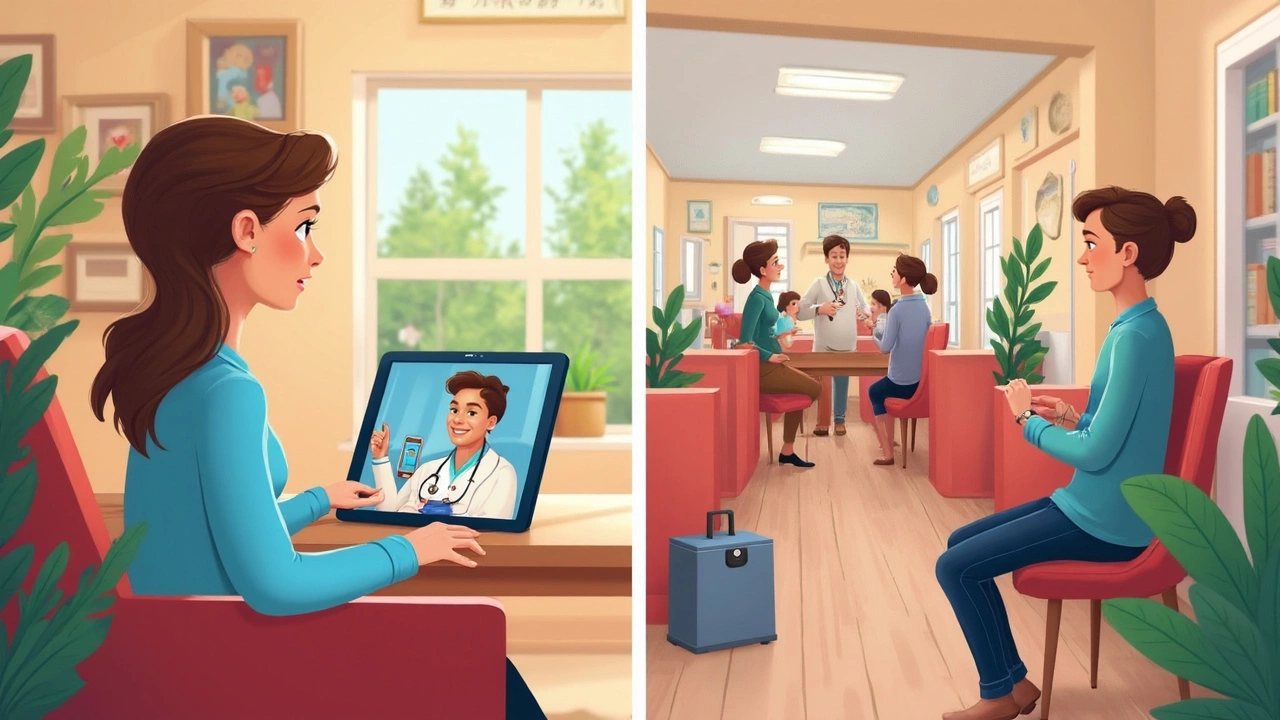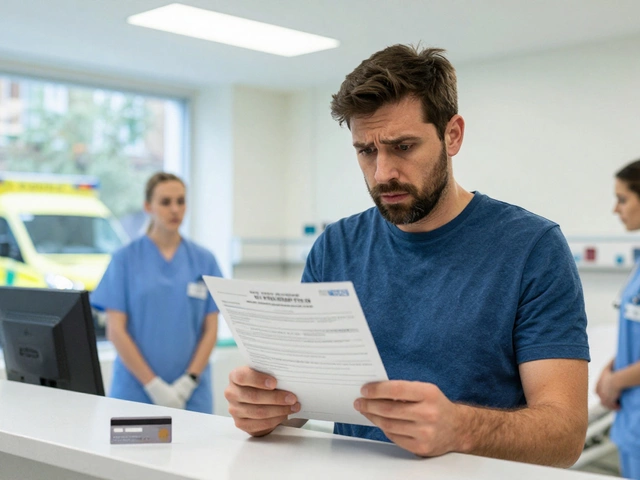Ever felt a sore throat coming on at 9 p.m. and wished you could just text a doctor? That’s exactly why services like Teladoc are exploding in popularity. But here’s the big question: can Teladoc actually diagnose what’s wrong with you, or are you just getting advice you could’ve googled?
Teladoc lets you connect with real, board-certified doctors from your phone, laptop, or tablet—no waiting rooms, no driving, no awkward paper gowns. Most people use it when they want answers fast, without the hassle of setting up an office visit. Suddenly you’ve got medical help on your couch, often within minutes.
This isn’t just about convenience. Sometimes, Teladoc doctors are able to diagnose common issues, write prescriptions, and send you a treatment plan all in the same session. But does that mean they can handle everything? Not quite—there are definitely limits. Knowing those limits can save you time, money, and a lot of frustration.
- How Teladoc Works: The Essentials
- What Medical Issues Can Be Diagnosed Online?
- When Online Care Falls Short
- Tips to Get the Most Out of Your Teladoc Visit
How Teladoc Works: The Essentials
So, how does Teladoc actually work when you need medical help? It’s all about getting you straight to a board-certified online doctor without the hassle of traditional appointments. Here’s what usually happens:
- Sign Up and Set Up: Download the Teladoc app or go to their website. You’ll answer a few questions about your health and insurance (if you’ve got it).
- Request a Visit: Choose the kind of care you need—urgent care, therapy, dermatology, even nutrition. For quick stuff, like a cough or sinus infection, just pick "medical care." You can either schedule a time or ask to see the first available doctor, sometimes in less than 10 minutes.
- Consultation: A Teladoc doctor meets you by video, phone call, or even texts. Most people go with video so the doctor can actually see what’s up. They’ll ask questions just like at a regular office. If it’s something visible—like a rash or pink eye—you might be asked to use your camera.
- Diagnosis and Treatment: As long as it’s a problem they can handle online, the doctor can give a diagnosis. Need medication? They can send a prescription to your local pharmacy. After the call, you’ll get notes on your visit and tips for next steps.
Most Teladoc visits (for basic medical issues) last 10 to 15 minutes, but the doctor will take the time to cover what you need. And if they think it’s something more serious, they’ll tell you to go get in-person care right away.
For those wondering about security and privacy, Teladoc uses HIPAA-compliant technology. Your info is locked down, just like with any in-person doctor office.
| Feature | Details |
|---|---|
| Available 24/7 | Get care any time, day or night |
| Languages Supported | Over 30, including Spanish |
| Insurance Required? | No — pay per visit or use insurance if you have it |
| Average Wait Time | Under 10 minutes for many visits |
Biggest plus? You can literally be anywhere. On your couch, at work, even on vacation. All you need is your phone or computer—and a few minutes to spare.
What Medical Issues Can Be Diagnosed Online?
Not every health problem needs a hands-on exam. With Teladoc, you can get real answers for a surprising number of regular health issues, right from your phone or laptop. So, what can online doctors actually diagnose and treat? Turns out, quite a lot.
Here’s a breakdown of the most common stuff Teladoc docs handle:
- Cold and flu symptoms – stuffy nose, mild fever, body aches, sore throat, or cough.
- Sinus infections – sinus pain or congestion that won’t quit.
- Allergies – sneezing, itchy eyes, runny nose, and more.
- Minor skin concerns – rashes, bug bites, or even mild acne. They’ll usually ask for photos.
- Pink eye – red, itchy, goopy eyes? This is quick to diagnose online.
- Digestive issues – upset stomach, mild nausea, or even mild diarrhea.
- UTIs in women – burning when you pee, urgency, or frequent trips to the bathroom.
- Prescription renewals – if you need a refill for something that doesn’t require a physical check, many common meds are covered.
These problems work well for virtual visits because they usually don’t need a doctor to poke or prod you. If you’ve got a smartphone, you can snap photos or talk face-to-face using video. For a lot of standard symptoms, that’s all a telemedicine doctor needs to figure out what’s up and send a prescription to your local pharmacy.
Now, some Teladoc stats: In 2024, Teladoc reported that more than 60% of its sessions were for cold and flu-like illnesses, allergies, or simple infections. That lines up with what folks use regular urgent care for, but cheaper and way quicker.
Some doctors even help manage ongoing conditions like mild asthma, migraines, or anxiety—but only if you don’t need physical tests. Teladoc docs can suggest medication tweaks or talk through symptom changes over video, saving you time in waiting rooms.
So, short version? If it’s something simple, and you mostly need a doctor’s advice, diagnosis, or a prescription—not a physical checkup—Teladoc is often a solid pick.

When Online Care Falls Short
Let’s get real—no matter how handy Teladoc gets, there are times when clicking “Join Visit” just won’t cut it. Some things just can’t be figured out over a screen. If you’re bleeding, broken, or downright miserable, online doctors will usually point you to a clinic or the ER instead. Why? Because there’s no way to check your blood pressure, look inside your ears, or take X-rays virtually.
A classic example: chest pain. Teladoc docs can ask about your symptoms, but they’re trained to tell you to seek emergency care if it sounds serious. Here’s what Dr. Jason Tibbels, Chief Clinical Officer at Teladoc Health, says about these limits:
“Virtual care isn’t a replacement for physical exams when symptoms might signal something life-threatening. Safety always comes first.”
That means if you have any of these, you need in-person care fast:
- Severe shortness of breath or chest pain
- Major injuries or heavy bleeding
- Loss of consciousness
- Sudden weakness, numbness, or trouble speaking (think stroke symptoms)
- High fever that won’t come down, especially in small kids
- Severe belly pain that just won’t quit
Most states also don’t let online doctors prescribe certain medicines like narcotics or ADHD meds due to strict laws. Plus, if you need stitches, a cast, or an urgent lab test, no video call can help there.
| When to skip Teladoc | What to do instead |
|---|---|
| Broken bones | Go to urgent care or ER |
| Severe allergic reactions | Call 911 or head to the ER |
| Signs of a heart attack or stroke | Call 911 |
| Uncontrolled bleeding | Seek emergency care |
| Suicidal thoughts | Contact emergency mental health services |
The bottom line? Teladoc is a game-changer for routine issues, but it won’t replace your local doctor or emergency room for the big stuff. When in doubt, play it safe and go see someone in person.
Tips to Get the Most Out of Your Teladoc Visit
Getting good care through Teladoc isn’t just about clicking “start visit.” There are a few ways to help your online doctor get the information they need and make sure you walk away with real answers.
- Be prepared with details. Write down your symptoms and when they started. Have a list of medications you’re taking, even vitamins or supplements. If your issue is visible (like a rash), snap some clear pictures in good lighting ahead of time.
- Set up in a quiet, private space. You don’t want your visit interrupted by background noise or roommates. Privacy also helps you share honestly.
- Have your insurance info handy. If you’re using insurance for your telemedicine visit, log in early to make sure all the details are correct. Teladoc takes most major plans.
- Use a good internet connection. Nothing kills a telemedicine consult like lag or dropped video. Wi-Fi beats mobile data, so pick the strongest signal you have.
- Write down your doctor’s advice. After the visit, jot down what the doctor recommends and any instructions, especially if you’re getting a new prescription.
The best part? Most Teladoc visits last about 10 to 15 minutes. According to Teladoc’s own data, around 92% of users report their issues get resolved without needing a follow-up. That’s a huge step up from sitting around in urgent care, just to get the same advice.
If you can, try to use video instead of just calling in. Doctors can “see” a lot, and little things—like your coloring or how swollen an area looks—can help them give a solid diagnosis. And if your doctor asks for follow-up or to send extra photos, do it as soon as possible. It keeps things moving and helps you get treated faster.
| What to Prep | Why It Matters |
|---|---|
| Symptom Timeline | Doctors spot patterns faster |
| Medication List | Avoids bad drug interactions |
| Photo of Issue | Faster, more accurate diagnosis |
| Insurance Card | Saves time on billing questions |
Remember, if you feel worse or don’t get better, tell the Teladoc doctor or reach out to your regular primary care. Virtual care is a tool, not a magic cure—so always listen to your body too.




